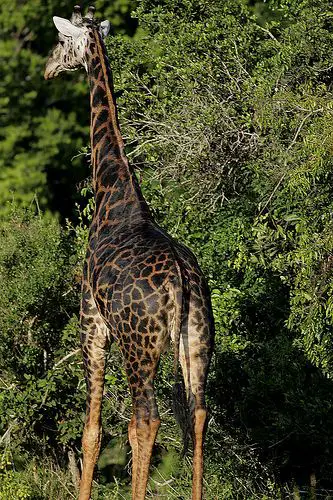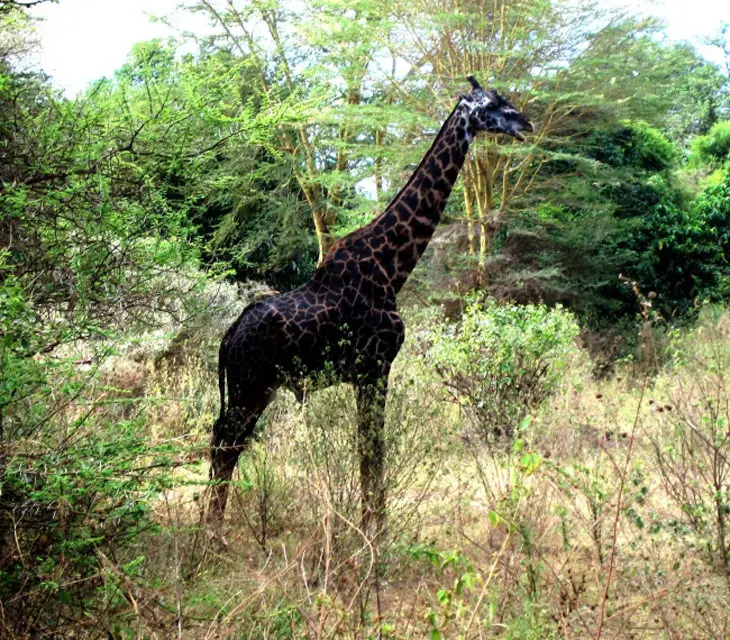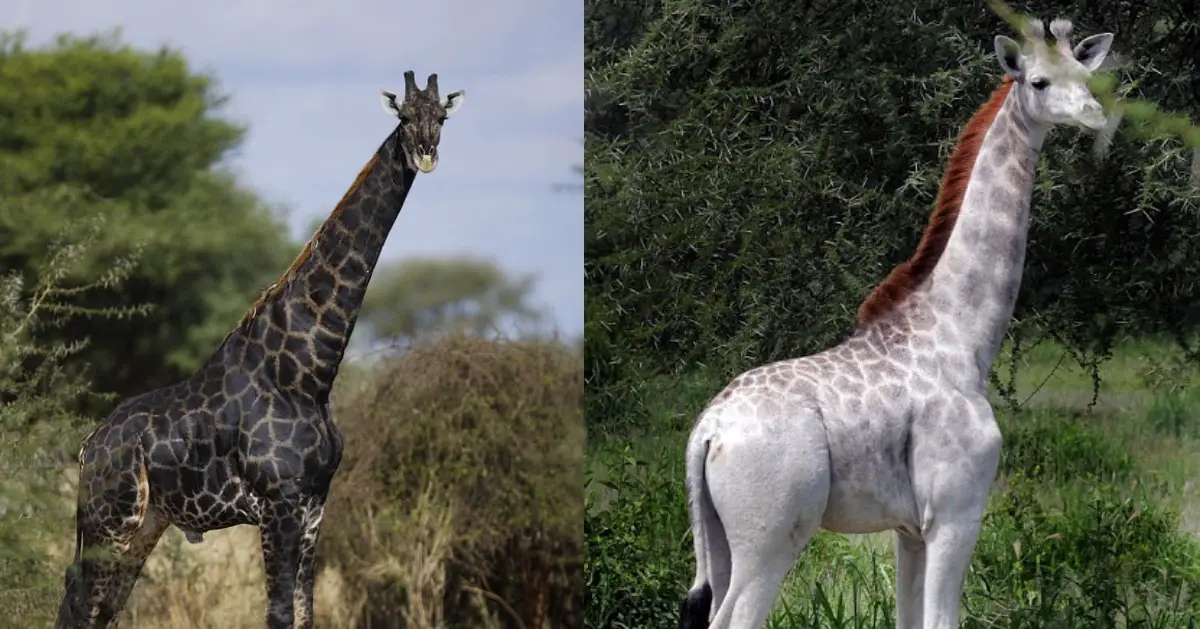Giraffes are some of the most famous wild animals on Earth. Native to Africa, giraffes are known as the tallest terrestrial animals in the world. As about these massive creature’s coat, it usually has brown patches separated by white or cream color. Nevertheless, some extremely rare giraffes have a completely white or black coat. These are the leucistic and melanistic giraffes – the rarest in the world

In both scenarios, it is a regressive gene that affects the skin pigmentation. While albinism results in lack of skin pigmentation, the melanism occurs because of the skin’s black pigmentation. Opposite to albinism, melanism can be found in numerous animals species, including leopards, tigers, foxes and even giraffes.

Although, some species are likely to develop melanism more than others (the jaguar for example), this rare condition has a major impact upon their social life. Due to their uncommon looking, these animals are usually rejected by their groups. Their lifespan is extremely low as they’re always a target for predators, due to their lack of natural camouflage.

As about the white giraffe, also extremely rare (there are only two known white giraffes in the world), their extremely unusual coloring is a result of a genetic condition. This time it is leucism. This condition is very similar with albinism, but while the albinism also affects the eyes or other parts of the bodies, leucism only leads to a loss of pigmentation.

A couple of years ago, a white giraffe pair (mother and baby) have captured on camera for the very first time in history. You can watch them bellow!
Now there is only one leucistic giraffe left in the wild(and the only one in the world). Named Omo, the rare creatures lives in the Tarangire National Park, Tanzania. Dr. Derek Lee, founder and scientist at the Wild Nature Institute is the one that spotted her for the very first time.

“Omo is the only pale giraffe we are currently aware of, but we have also observed leucistic waterbuck, cape buffalo and ostrich in Tarangire,” Dr. Lee said. “Omo appears to get along with the other giraffes, she has always been seen with a large group of normally coloured giraffe – they don’t seem to mind her different colouring.”


